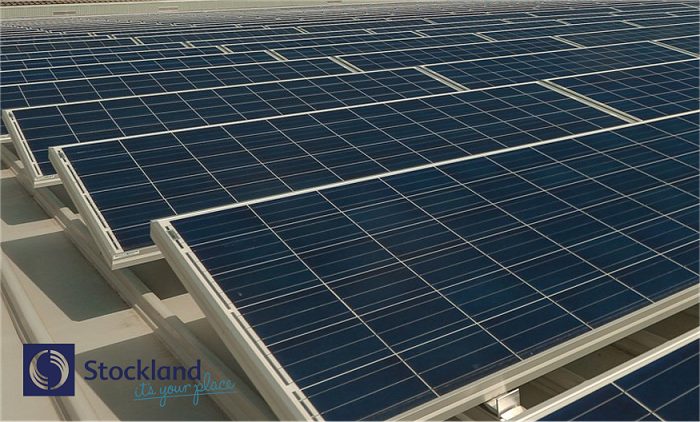
Image: Stockland
Property development giant Stockland has announced it is installing a total of 39,000 solar panels on major shopping centres in three Australian states.
In what Stockland says is Australia’s largest retail property solar program, ten malls will have solar power systems installed, with the first to be a $3.4 million 1.6MW system on the rooftop of Stockland Cairns in Queensland.
The systems won’t just slash emissions, but also have a positive impact on Stockland’s bottom line.
“Investing in technology like solar energy is not only environmentally sustainable, it also makes good business sense,” said Mark Steinert, Managing Director and CEO of Stockland. “Our forecast average yield over a 10 year period is 11.6 per cent on capital invested, generating strong shared value for both our investors and our communities.”
Stockland’s $23.5 million national investment in solar is expected to generate 17.2 GWh of clean electricity annually.
The malls to get a solar makeover:
Queensland
- Caloundra
- Hervey Bay
- Bundaberg
- Cairns
- Burleigh Heads
Victoria
- Traralgon
- Point Cook
- Wendouree
New South Wales
- Merrylands
- Green Hills
This project isn’t the company’s first foray into solar energy. In February this year, a 925kW system consisting of more than 2,900 solar panels was switched on at Stockland Wetherill Park in New South Wales.
By the start of this financial year, Stockland had a total 2.26 MW of solar PV capacity across its retail portfolio, surpassing its original target to deliver 1.35 MW of renewable energy by FY17. Its other major system is a 1.22MW array at Stockland Shellharbour in New South Wales, which began cranking clean energy in 2015 and was one of Australia’s largest rooftop PV installations at the time.
Projects to date have generated more than 2.3 million kilowatt-hours of electricity.
“We’re extremely proud to be setting a new standard in solar for Australian property which will help create clean, green energy for our retailers, our customers and the communities we operate in,” said Mr. Steinert.
Stockland has committed to reducing its greenhouse gas emissions intensity by 60% by FY25 compared to FY06. In FY17, the company purchased 103,242,404 kilowatt-hours of electricity – 11 million kilowatt hours less than in FY13 (114,2561,122 kWh)
Another major shopping centre in Australia to have recently installed solar is Westfield Marion in Adelaide, which boasts the nation’s largest solar car park canopy system (647kW).

 RSS - Posts
RSS - Posts



At this rate with buisiness seeing where their own best interests lie and investing in their own energy generation Turnbulls NEG will be left twiddling their thumbs with nothing to do except having wasted a lot of taxpayer money and achieving nothing.
What can they do? They have little say in the private energy markets except for pleading with the private companies who comprise them, to change.
The energy portfolio is a joke, I sure hope it doesn’t pay much. It doesn’t take a great deal of ministerial effort to receive a few reports every month from the private electricity companies who run the whole thing.
What about what Bunnings is doing about rooftop photovoltaic systems on its stores across Australia?
Also, in a missive received today;
”
The Clean Energy Regulator has released October 2017 Large-Scale Renewable Energy Target data.
Highlights for October include:
The accreditation of 17 new power stations equalling a total capacity of 37.5 MW.
Six of these newly accredited power stations are solar power stations at the University of Melbourne campus, bringing the total number of accredited power stations on university campuses across Australia to 15.
Kiata Wind Farm in Victoria, one of the newly accredited power stations, has a total capacity of 31 MW. This wind farm has nine Vestas 3.45MW wind turbines that have a rotor diameter of 127 metres. These are the largest and most efficient turbines currently being used in Australia.
An additional three solar projects were fully financed in October with a total capacity of 171 MW. This brings the total committed capacity to 1689 MW.
Visit Large-scale Renewable Energy Target market data for more information and data.
“